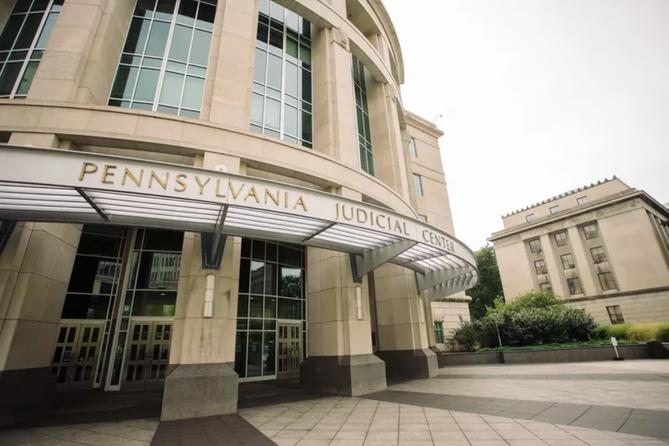This article is part of a yearlong reporting project focused on redistricting and gerrymandering in Pennsylvania. It is made possible by the support of Spotlight PA members and Votebeat, a project focused on election integrity and voting access.
HARRISBURG — Pennsylvania’s highest court has affirmed the state’s new legislative district maps and rejected final legal challenges to them, clearing the way for their use in the May primary.
In a brief order, the state Supreme Court on Wednesday said the maps were “in compliance with the mandates of the Pennsylvania Constitution and the United States Constitution.”
The state House and Senate maps were drawn by the Legislative Reapportionment Commission, a five-member panel composed of Pennsylvania’s top legislative leaders and an independent chair, and challenged by nine separate parties including lawmakers, former elected officials, and private citizens.
The high court on Wednesday also set a final primary calendar for legislative candidates, allowing county election directors and political hopefuls to begin preparing for the election in earnest. Candidates can begin collecting signatures March 18 to appear on the ballot and must be finished by March 28, a compressed timeline.
The Legislative Reapportionment Commission released the final state House and Senate maps in early February. While the upper chamber’s map is unlikely to radically alter the composition of its members, the state House map creates several additional seats that could be won by Democrats. Advocates for the map say that’s because it undoes decades of partisan gerrymandering and reflects changes in population that benefitted Democrat-heavy areas.
The panel passed the maps in a 4-1 vote, with only House Majority Leader Kerry Benninghoff (R., Centre) voting against them.
He later filed one of the legal challenges against the final plan, claiming the state House map infringed upon the Voting Rights Act by disregarding the traditional redistricting criteria outlined in the Pennsylvania Constitution — like ensuring equal population in districts — and considering race as a dominant factor.
Benninghoff also claimed the map was drawn to benefit Democrats and ignored Pennsylvania’s political geography, which he said naturally provides greater Republican representation in the General Assembly because Democratic voters are typically concentrated in a small number of areas.
“[The final map] subordinates the nonpartisan redistricting criteria for purely partisan purposes in doing so, it creates violence to the constitution,” Benninghoff said before voting against the final plan. “That is the very definition of the term gerrymandering. And frankly, it’s shameful.”
The panel’s nonpartisan Chair Mark Nordenberg, ex-chancellor of the University of Pittsburgh, strenuously pushed back on Benninghoff’s claims, pointing to the House map’s superior scoring in the traditional criteria as compared to the current one.
In a filing to the state Supreme Court, Nordenberg argued the Free and Equal Elections Clause of the Pennsylvania Constitution guarantees that no voter’s voice is diluted due to partisan affiliation or place of residence.
“Rather than arguing that a voter’s vote should not be diluted based on where the voter lives, Leader Benninghoff instead argues that voters who vote for Democratic candidates should have less of a say in the makeup of the General Assembly because those voters have chosen to pack themselves in cities,” he wrote.
Nordenberg went on to argue that, while the Voting Rights Act prohibits the use of race as the sole or predominant factor in redistricting, the Free and Equal Elections Clause permits the consideration of race.
Senate Minority Leader Jay Costa (D., Allegheny), a member of the Legislative Reapportionment Commission, said in a statement he was pleased with the ruling “because not only were these maps fair, reasonable, and supported in a bipartisan way, today’s decision means we can proceed with our election calendar and folks can begin preparation to run for office or learn who their potential representatives will be.”
WHILE YOU’RE HERE… If you learned something from this story, pay it forward and become a member of Spotlight PA so someone else can in the future at spotlightpa.org/donate. Spotlight PA is funded by foundations and readers like you who are committed to accountability journalism that gets results.
